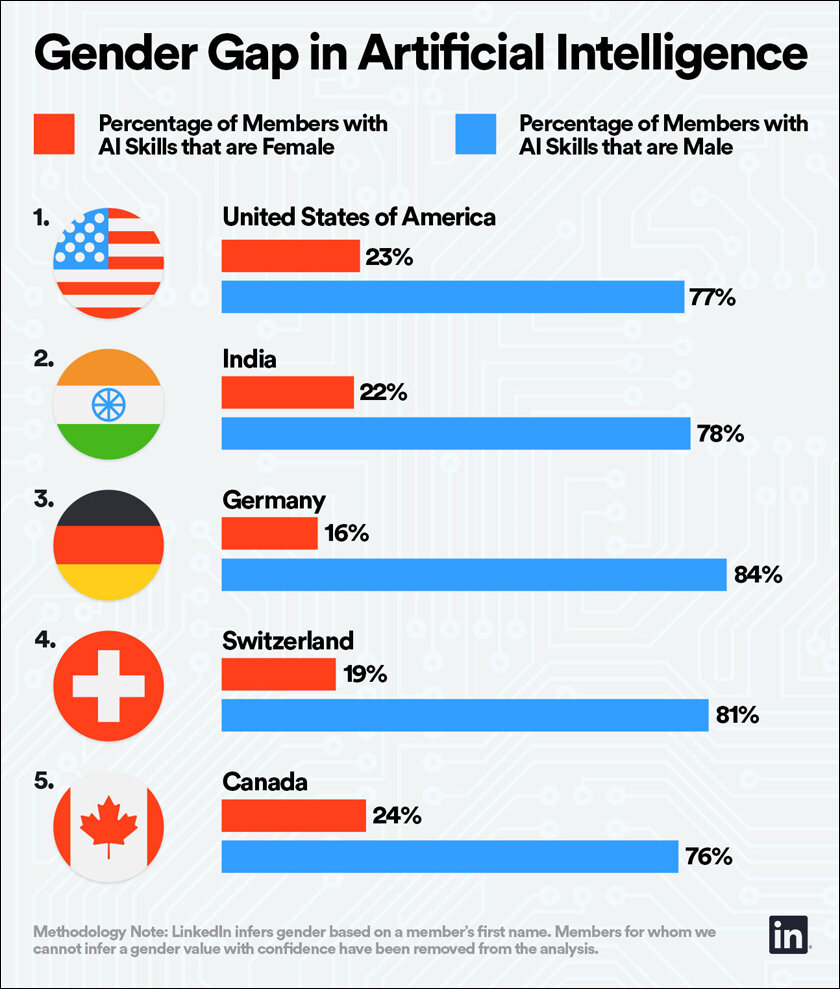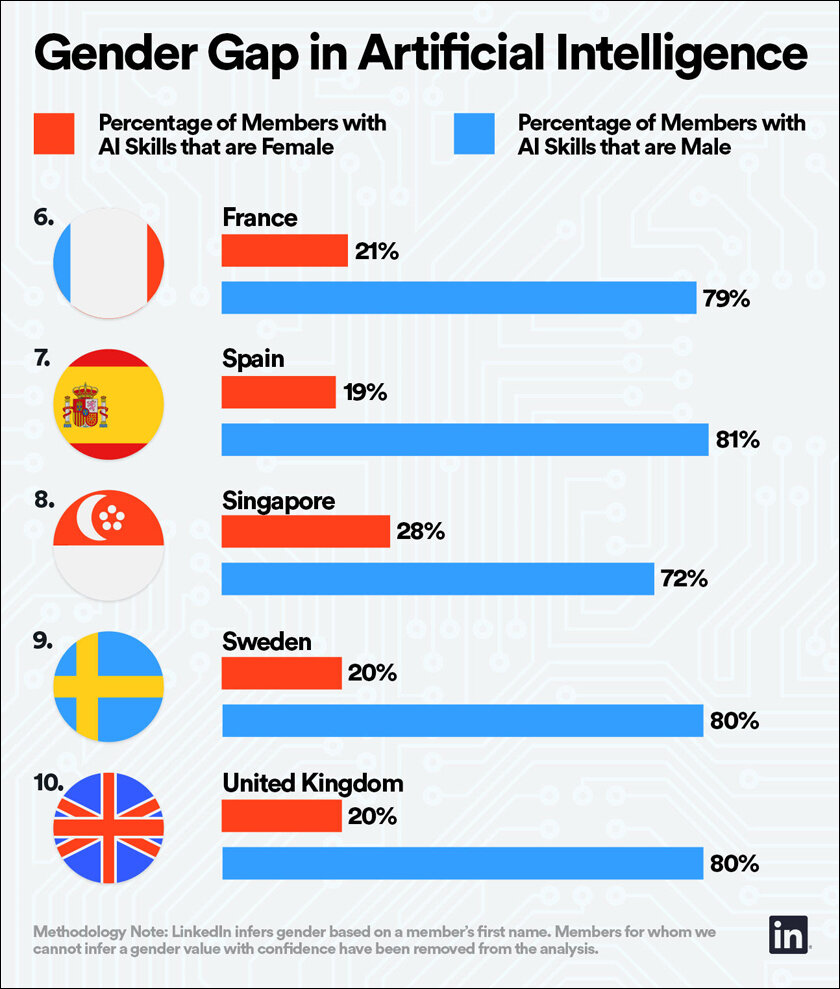Only 22% of AI professionals across the world are women. Adarsh examines the reasons for this gender disparity.
Let’s start with some data to set the context for this article. Needless to say, Artificial Intelligence is one of the world’s fastest growing technology sectors. The global AI market size is projected to expand at a compound annual growth rate (CAGR) of 37.3% from 2023 to 2030, according to a report in the Forbes Advisor. It is projected to reach a whopping $1,811.8 billion by 2030.
But according to another report published by the World Economic Forum, only 22% of professionals in the world of AI are women. This number drops further to 18% when considering authors at leading AI conferences.
The report also adds that the AI research staff at Facebook has only 15% women while that figure at Google stands at 10%.
So, what is the reason for this disparity?

Reasons for Gender Disparity
A UNESCO Science Report in 2021 found that women are under-represented in fields such as computing, digital information technology, engineering, mathematics and physics. Countries such as Singapore, Italy and South Africa were leading the way with each having women make up about 28% of professionals with AI skills, compared to just 14% in Brazil, 15% in Mexico and 16% in both Germany and Poland.
Seema Ramachandra, head of Cloud Customer Engineering at Google focusing on Data Analytics and AI, says there is a lack of awareness among women about the plethora of roles that exist within the field of AI. She believes that even though girls perform well academically in STEM (science, technology, engineering and math) courses, they find it challenging to pursue a career in a male-dominated field. This in turn results in a lack of female role models for aspiring women to look up to.
Mamta Aggarwal Rajnayak, VP and Head of AiDa (Enterprise AI-ML Products & Platform) at American Express, says the reason for the significant gender gap is because women are advised to take up “easy career” options.
“As per a UN report, women still account for only 28% of Engineering graduates and 40% of graduates in Computer Science and Informatics. This gap widens as girls get ready to join the workforce as despite having a solid STEM degree with strong grades, they are advised and encouraged to take up easier career options than contributing to niche and upcoming areas like AI&ML.”


Less Access to Funding for Women
Another systemic reason for the under-representation of women is that women in science and tech are also less likely than men to get access to funding.
Susan Sly, founder and CEO of The Pause Technologies, says the underrepresentation of women has a lot to do with the fact that they have less access to funding and grants.
“One of the most critical problem areas is venture capital. The funding environment for women-led ventures, particularly in the AI and technology sectors, starkly illustrates the systemic barriers to equity. Women’s pitches to venture capitalists achieve a success rate of less than 2.5%, a figure that declines further for women of colour. This is despite compelling evidence that businesses led by women are not only viable but tend to be more profitable.”
Studies back up her theory. A report from Harvard Business Review, citing data from Crunchbase, states that start-ups led by women received just 2.3% of venture capital in 2020. Women in academia were also found to receive less grant funding despite being twice as productive.

How to Tackle this Problem
Long story short, mentorship, community-building and continuous learning are the solution to getting more women involved in AI-based roles across the world.
Strenuous efforts need to be made at government, academic and corporate levels to address this gender imbalance. The challenge is to attract and retain women in these subject areas and maintain momentum.
According to Seema Ramachandra, to help women carve a career for themselves in this field, there need to be mentorship programmes for women employees by organisations, along with community building around AI. Conscious unbiased initiatives during the hiring process and sensitisation of managers should also be introduced to ensure that job descriptions are gender-neutral.
The Last Word
In a digitally driven future, advances in technologies such as AI will eventually blur the boundaries between male and female that form the basis of the gender gap, according to UNESCO.
COVID-19 prompted changes in work-life balance and these need to be translated into policies that ensure that women do not spend a disproportionate amount of time as unpaid carers, educators and home-makers.
Women must be given equal access to education and information that will enable them to compete equally with men for the jobs of the future. We can only hope that in the years to come, more and more women will get involved in this field and that the gap would eventually be bridged.
In case you missed:
- India’s AI Ambitions in the Spotlight amidst DeepSeek’s Disruption
- How India broke its Paralympics Medal Tally by using Assistive Tech
- Mary Meeker’s AI Report: ChatGPT is Growing Faster than Google Search
- Why is Indian Education Sector facing Record Number of Cyberattacks?
- Target, NVIDIA Best Tech Workplaces in India, Amazon, InMobi among Worst
- Is the Foldable iPhone Around the Corner?
- OpenAI is now Focussing on Superintelligence!
- Scientists Discover Earth’s Third Energy Field, after 60 Years of Searching
- Param Rudra: Modi launches India’s Homegrown Supercomputing Powerhouse
- Meta’s Puffin Project: Future of Mixed Reality in a Pair of Glasses










